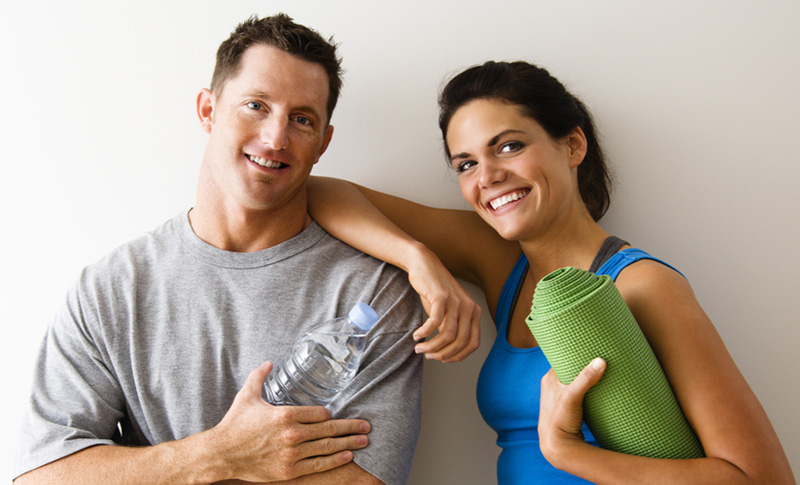It may be winter and cold or snowy, but exercise still figures prominently in many people’s schedules. If you’ve just started an exercise regimen or tend to just do what you’ve always done without giving it much thought, it’s time to pay closer attention to how you prepare for exercise and how you execute.
The older you get, the easier it is to get injured by doing too much, not being warmed up or making an awkward movement, so why not get into the good habits that help prevent exercise injuries?
Hydration
You wouldn’t start your car without gasoline, so don’t start your body without proper hydration. Water lubricates your system and helps prevent injuries while working out. Ideally, start drinking water 20 minutes before your workout to allow it time to percolate through your system. Drink throughout your activities and afterward to replace fluids lost through sweating.
Nutrition
Exercise requires energy, and you want to make sure your body is ready to take on the challenges you impose on it. It needs access to glycogen for muscles to work properly; otherwise, they are subject to tears that may take time to heal. Don’t put yourself out of action unnecessarily.
Eating carbohydrates prior to working out is helpful in improving performance and may allow you to exercise for a longer period or at a higher intensity. Consuming protein after a workout helps to repair damage done to muscle fibres.
Circulation and Muscles

Start any workout, including a run, with a bit of light cardiovascular movement to get your blood moving through your system easily and to loosen your muscles. Jump rope, jog in place or ride an exercise bike for 5 or 10 minutes.
Flexibility
Give your flexibility a boost by doing some stretches after your warm-up. They will help your body handle the stress of exercise without injury.
Best Before Date
Overextending yourself isn’t the best way to demonstrate just how youthful, macho or cool you are. Be realistic as you assess your capabilities and plan an exercise program. Don’t simply assume you can do whatever routine it was you last tried, since that may have actually been years ago. It’s easy to do too much exercise for too long with too much intensity, resulting in injury. So, be realistic and aware.
Sex Matters
We’re talking about gender here. Men and women have different physical susceptibilities that may make certain injuries more likely. It doesn’t mean that men or women should refrain from specific activities; it’s just a reminder to be aware of the dangers before jumping into the fray.

Generally speaking, men are better at activities that use a rigid plane of motion: Nautilus machines and push-ups, for example. Women usually excel at activities that use multiple or diagonal planes of motion: yoga, Pilates, cycling and stair climbers, for instance.
Variety is the Spice of Life
Triathlons have gained in popularity for a good reason: they require athletes to cross-train, using different muscles for the swimming, biking and running portions of the competition, which helps prevent overuse and injury. Take a leaf from their workout notebooks and vary your routine. If you focus on cardio one day, try strength the following day and put your energies into stretching the next.
Relax
Rest should also be part of any exercise routine. Remember, your body, like any machine, can break down if not maintained properly. Take at least one day a week off from exercising to allow your body to heal itself. In addition, if you’re feeling tired or sore, there’s no shame in skipping a workout. It’s more likely that you’ll be injured during exercise when you’re exhausted and not using proper form. A hot bath with Epsom salts works wonders for sore muscles.
Chill Out
A cool down is especially important if you are engaged in a high-intensity exercise that increases your heart rate and puts a heavy strain on muscles. It allows you to reduce your heart rate gradually and resume normal breathing. It also prevents muscle soreness.
So, get moving – but keep all of these suggestions in mind so you can continue moving injury free!
